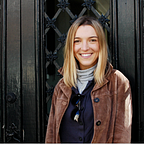Have you tried digital sketching with Abstract?
At Wayfair, we use Abstract to foster collaboration when ideating
With big names like Spotify and Instacart on board, Wayfair recently joined the ranks of design teams that fell in love with Abstract. Not only has the platform streamlined our stakeholder communication and version control, but it has increased our team’s opportunities for collaborative creative exploration.
Let me show you why Abstract is the perfect tool to use to in sketching sessions.
Benefits:
- Everything is already documented
- You know who did what
- Everyone is working within the same constraints
- Lots of idea generation in a short amount of time
[Don’t know about Abstract? Learn more here “Git repository for designers as you’ve never seen: Abstract (+ Sketch)” by Matteo Gratton]
Digital Sketching (lazy person’s ideation)
The beauty of Abstract is that multiple people can work on the same file and merge without conflict. In one 30 or 45-minute ideation session, designers can collaborate on the same problem and ideas can be adopted as soon as the session is complete. No more taking photos of sketches and recreating them as wireframes!
“ — No more taking photos of sketches and recreating them as wireframes!”
Step 1: Pick a narrow/simple user problem
Try to limit the scope of the problem you want people to solve for so that you can get high quality, detailed ideas out of the session. If you go too broad with the problem space — something like “how can we show content other than navigation on category pages?” — you will stump your team of designers and leave their heads spinning for most of the session.
“— if you limit the scope of the problem, you will get higher quality ideas out of your session”
By contrast, if you go for a problem that is more specific and in context — “how can we best display sale and brand content in between rows of existing navigation on category pages?”, for example — people will likely feel more confident that they can add value and viable ideas, even if the workstream is not their area of expertise.
Step 2: Create the template
I have found digital ideation sessions to be most successful when you put in a little work beforehand.
As the meeting-holder, here’s what you can do:
- Create pages within your file with each participant’s name
- Collect the minimum amount of information to inform the group about the area of focus for the ideation session (customer problem, technical constraints, etc) and put that on artboards for context
- Copy and paste the artboards into each person’s page so that they all start with the same information
Your pre-meeting template could look something like this:
Step 3: Gather your team of innovators
The best ideation sessions include designers from diverse workstreams (For example, I had designers from upper and lower funnel, as well as our design system participate in this session). This ensures that you’ll get a broad perspective on possible solutions.
Ideally, if you pick the right scope of customer problem to tackle, and set up the context, then any designer could join in your session. No need to send a pre-read, just be sure to tell your participants to bring their computers and they will be able to dive right with your Abstract template.
“ — include designers from diverse workstreams”
Step 4: Ideation time!
At the start of the session, have each participant branch from the appropriate file and have them look for their respective page. Having people work on their own page will prevent merge conflicts later on. Branch names don’t really matter here as they will quickly be archived after the session.
Step 5: Bask in great ideation
In just a short amount of time, you can have usable digital artboards that the organizer can quickly refine and work with.
Step 6: Merge & Archive
At the end of the session, have each participant merge their work to the master file and archive their branch. When the organizer then branches after the session, each participant’s work will be in the same file!
Conclusion
These sessions are a ton of fun — for organizers and participants alike — and a great way gain exposure to the work the rest of your design team is doing.
Next time I will definitely include some front end engineers in the mix.
Happy ideating!
Special thanks to Norman Wozniak and Jamie Scheu
